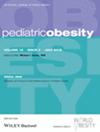Associations of 24-h movement behaviour with overweight and obesity among school-aged children and adolescents in Pakistan: An empirical cross-sectional study
Abstract
Background
Overweight and obesity among children and adolescents poses a significant public health challenge. In Pakistan, the prevalence of childhood overweight and obesity continues to rise, leading to long-term adverse effects on health. Various external influences shape children's health behaviours and outcomes, with parents, peers, schools, and communities playing crucial roles, particularly during formative years.
Objectives
This cross-sectional study aimed to investigate the associations between 24-h movement behaviour and overweight/obesity among school-aged children and adolescents, focusing on the intrapersonal, interpersonal, community, and school levels from a Social-Ecological Perspective.
Methods
A population-based cross-sectional study was conducted from 15 January to 15 March 2023, using a representative multistage random cluster sampling method. The study enrolled 4200 participants aged 9–17 years and 3371 parents from 62 schools in central Punjab, Pakistan. Participants' body mass index (BMI) was classified based on CDC US 2000 BMI percentiles. Socio-ecological factors were analyzed using chi-square tests, binary logistic regression, and stepwise logistic regression to examine their associations with overweight and obesity.
Results
The results of this study revealed that boys had 18.7% overweight and 9% obesity, while girls had 20.5% overweight and 13.2% obesity. Gender exhibited a significant association with weight status. A considerable proportion of participants did not meet recommended guidelines for junk food consumption (31.5% boys, 33.3% girls), physical activity (70% boys, 83.8% girls), screen time (37.7% boys, 41.1% girls), and sleep (55.7% boys, 54% girls). Individuals engaging in certain 24-h movement behaviours exhibited higher odds of obesity. Specifically, consuming fast food three or more days per week was associated with higher odds of obesity (odds ratio: 9.95, p < 0.01). Engaging in physical activity for less than 60 min per day, twice a week or less, was associated with higher odds of obesity (odds ratio: 3.47, p < 0.01). Spending three or more hours per day on screen time was linked to higher odds of obesity (odds ratio: 2.50, p < 0.01). Furthermore, being a short sleeper was associated with higher odds of overweight (odds ratio: 3.54, p < 0.01).
Conclusions
Children failing to meet none or only one guideline faced increased overweight/obesity risk compared to those meeting all recommendations. Individual-level factors such as eating habits, physical activity, sedentary behaviour, sleep patterns, and unhealthy lifestyle choices significantly influenced body weight status. Urgent interventions are needed to enhance physical education resources and sports facilities in schools to create healthier environments and reduce overweight/obesity prevalence among students, promoting lifelong habits of physical activity and improving health and well-being.

 求助内容:
求助内容: 应助结果提醒方式:
应助结果提醒方式:


